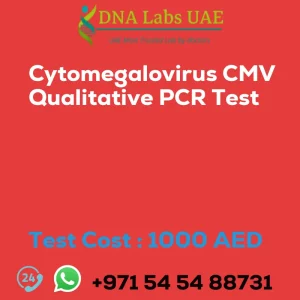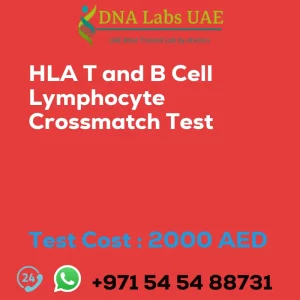Chimerism Post-Engraftment Test
Test Name: CHIMERISM POST-ENGRAFTMENT Test
Components: PCR, STR / Fragment analysis
Price: 1330.0 AED
Sample Condition: 4 ml (2 ml min.) whole blood / Bone marrow in 1 Lavender Top (EDTA) tube. Ship refrigerated. DO NOT FREEZE. Indicate Date of Bone Marrow Transplant.
Report Delivery: Sample Daily by 11 am; Report 7 Working days
Test Type: Transplantation pathology
Doctor: Hematologist
Test Department: MOLECULAR DIAGNOSTICS
Pre Test Information: Indicate Date of Bone Marrow Transplant.
Test Details
Chimerism post-engraftment testing is a medical procedure that is conducted after a bone marrow or stem cell transplant. It is used to determine the level of chimerism in the patient’s blood or bone marrow.
Chimerism refers to the presence of two genetically distinct cell populations in an individual. In the context of transplantation, chimerism occurs when the transplanted cells (donor cells) coexist with the recipient’s own cells (host cells).
The post-engraftment test is usually performed around 30 days after the transplant to assess the success of the transplantation and monitor the patient’s progress. It involves analyzing the patient’s blood or bone marrow samples to determine the percentage of donor cells present.
The test can be conducted using various techniques, including fluorescent in situ hybridization (FISH), polymerase chain reaction (PCR), or flow cytometry. These techniques allow for the detection and quantification of donor cells in the patient’s sample.
The results of the chimerism post-engraftment test provide valuable information about the engraftment of the donor cells and the level of chimerism achieved. High levels of donor cell chimerism indicate a successful transplant, while low levels may suggest graft failure or rejection.
Monitoring chimerism post-engraftment is crucial in determining the effectiveness of the transplantation and guiding further treatment decisions. It helps healthcare professionals assess the risk of graft rejection or relapse of the underlying condition.
In summary, chimerism post-engraftment testing is a medical procedure performed after a bone marrow or stem cell transplant to assess the level of donor cell chimerism in the patient’s blood or bone marrow. It is an important tool in monitoring the success of the transplantation and guiding further treatment.
| Test Name | CHIMERISM POST-ENGRAFTMENT Test |
|---|---|
| Components | |
| Price | 1330.0 AED |
| Sample Condition | 4 ml (2 ml min.) whole blood \/ Bone marrow in 1 Lavender Top (EDTA) tube. Ship refrigerated. DO NOT FREEZE. Indicate Date of Bone MarrowTransplant. |
| Report Delivery | Sample Daily by 11 am; Report 7Working days |
| Method | PCR, STR / Fragment analysis |
| Test type | Transplantation pathology |
| Doctor | Hematologist |
| Test Department: | MOLECULAR DIAGNOSTICS |
| Pre Test Information | Indicate Date of Bone Marrow Transplant. |
| Test Details |
Chimerism post-engraftment testing is a medical procedure that is conducted after a bone marrow or stem cell transplant. It is used to determine the level of chimerism in the patient’s blood or bone marrow. Chimerism refers to the presence of two genetically distinct cell populations in an individual. In the context of transplantation, chimerism occurs when the transplanted cells (donor cells) coexist with the recipient’s own cells (host cells). The post-engraftment test is usually performed around 30 days after the transplant to assess the success of the transplantation and monitor the patient’s progress. It involves analyzing the patient’s blood or bone marrow samples to determine the percentage of donor cells present. The test can be conducted using various techniques, including fluorescent in situ hybridization (FISH), polymerase chain reaction (PCR), or flow cytometry. These techniques allow for the detection and quantification of donor cells in the patient’s sample. The results of the chimerism post-engraftment test provide valuable information about the engraftment of the donor cells and the level of chimerism achieved. High levels of donor cell chimerism indicate a successful transplant, while low levels may suggest graft failure or rejection. Monitoring chimerism post-engraftment is crucial in determining the effectiveness of the transplantation and guiding further treatment decisions. It helps healthcare professionals assess the risk of graft rejection or relapse of the underlying condition. In summary, chimerism post-engraftment testing is a medical procedure performed after a bone marrow or stem cell transplant to assess the level of donor cell chimerism in the patient’s blood or bone marrow. It is an important tool in monitoring the success of the transplantation and guiding further treatment. |








